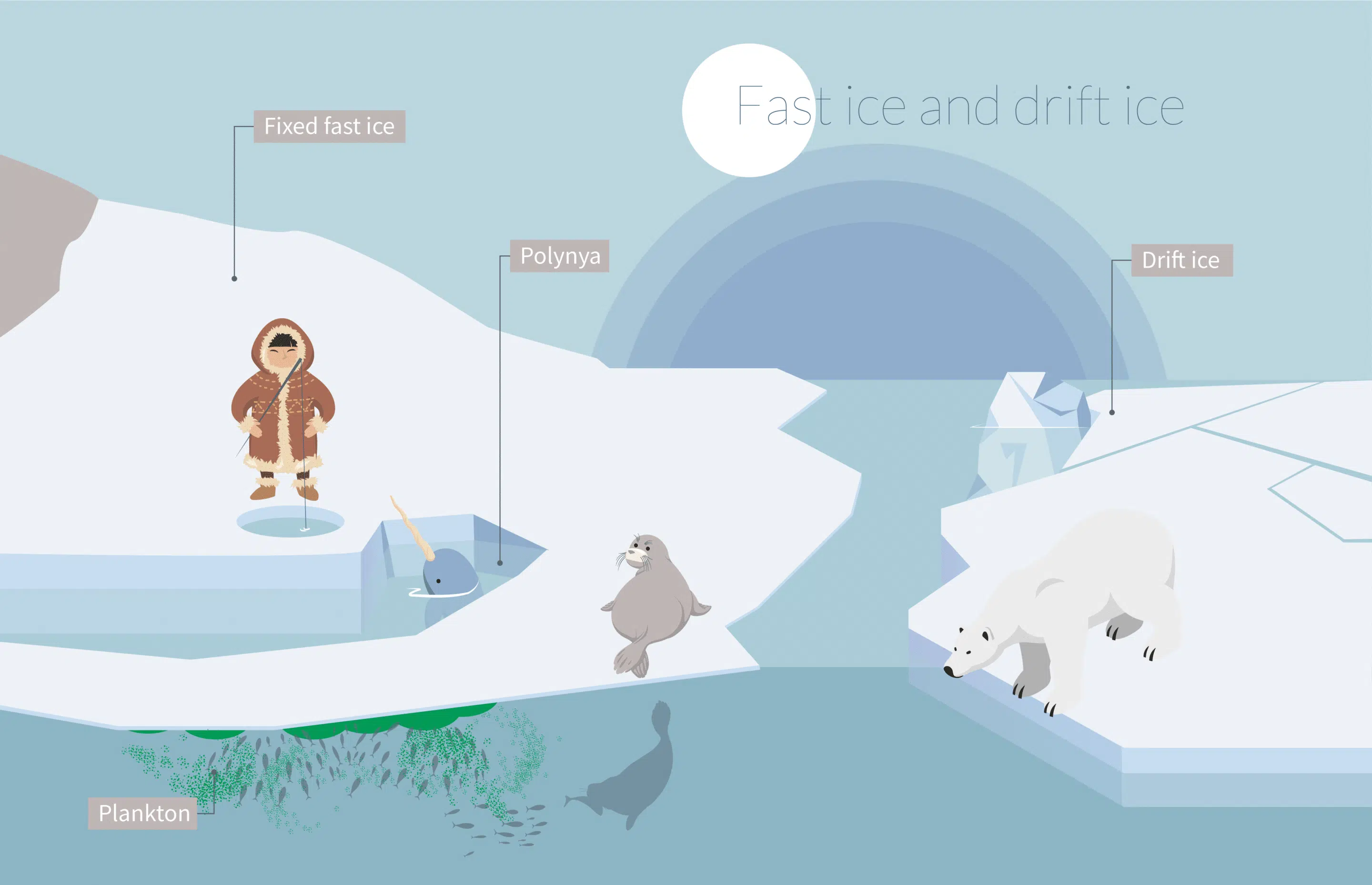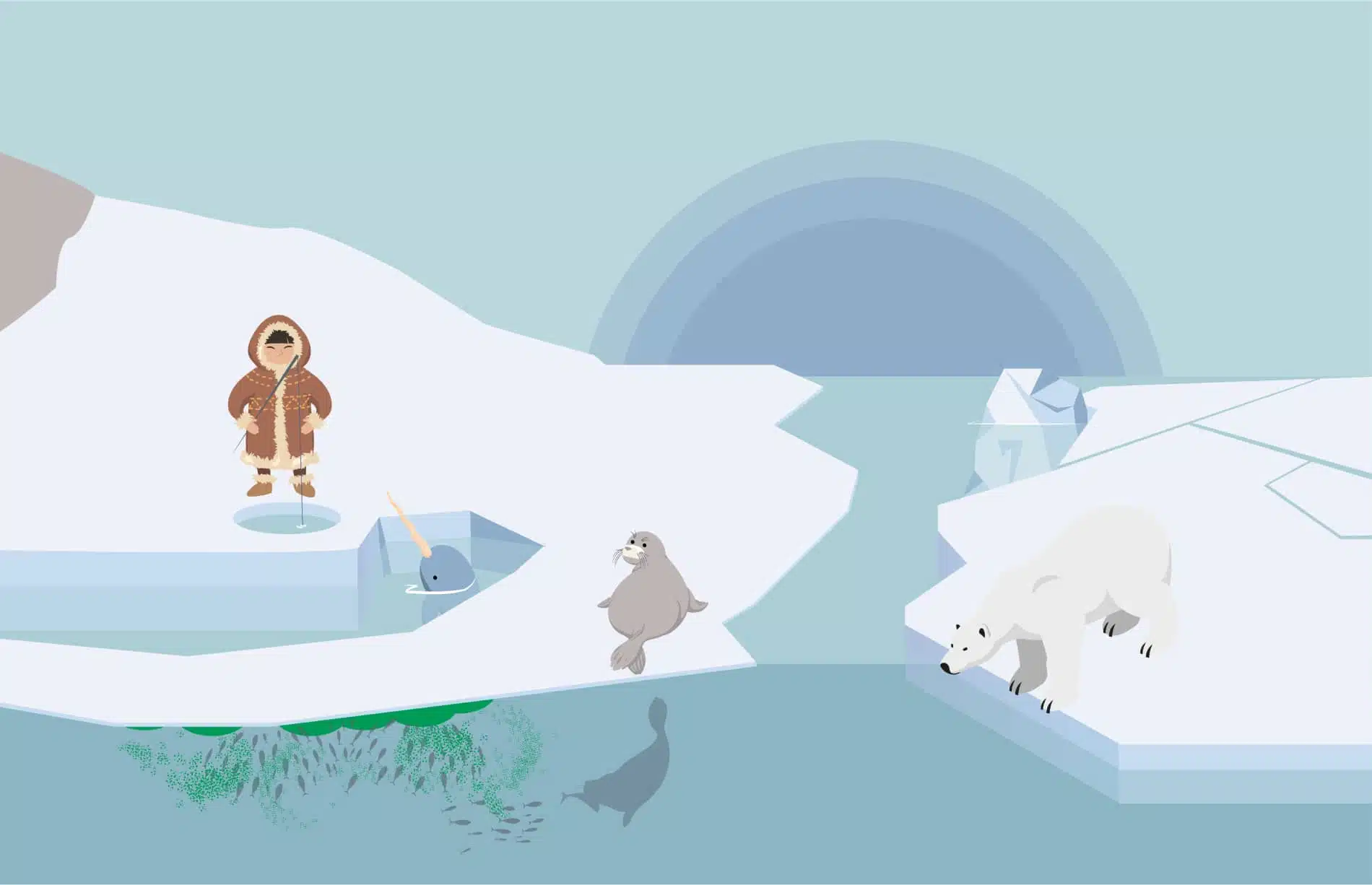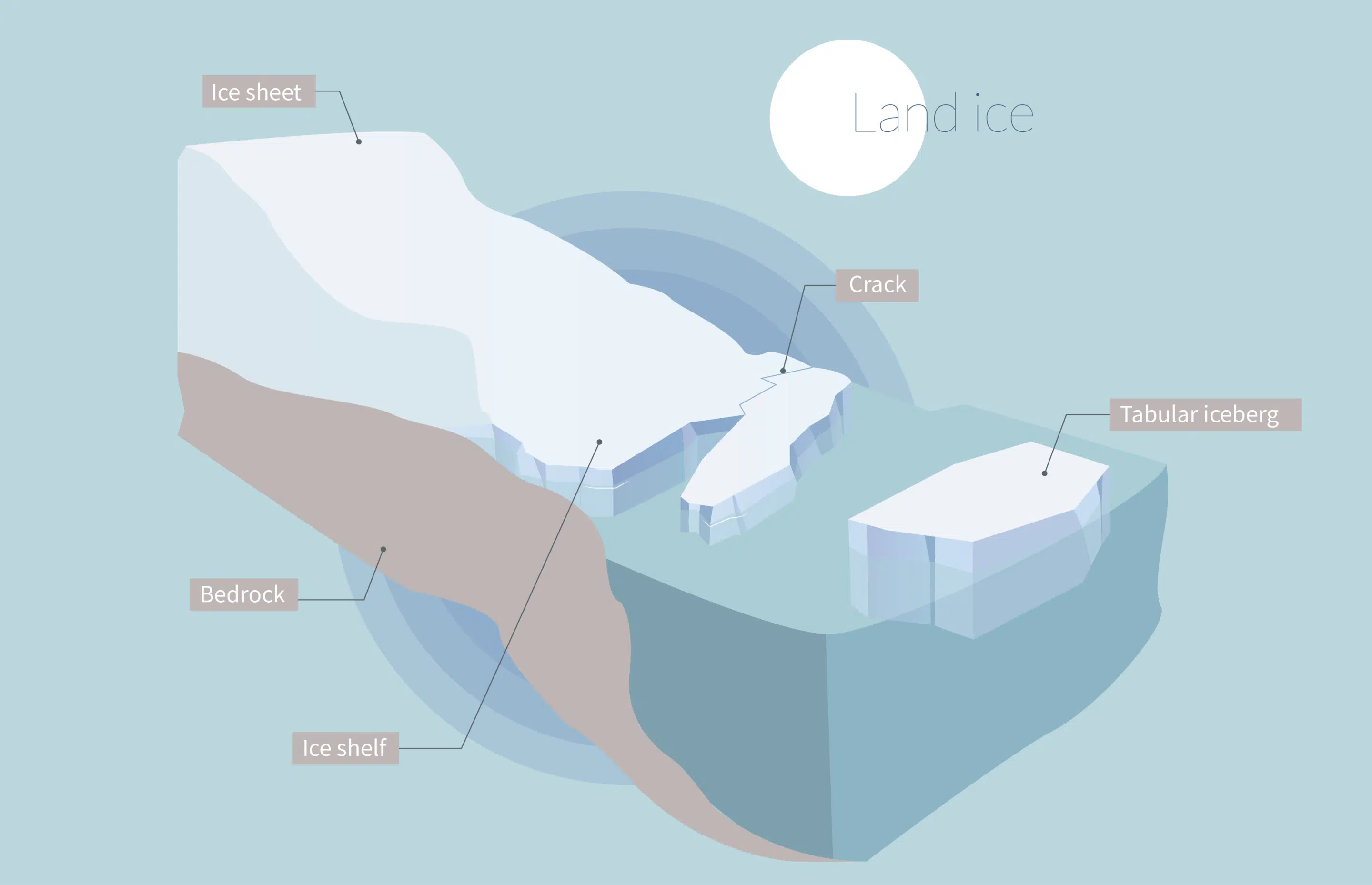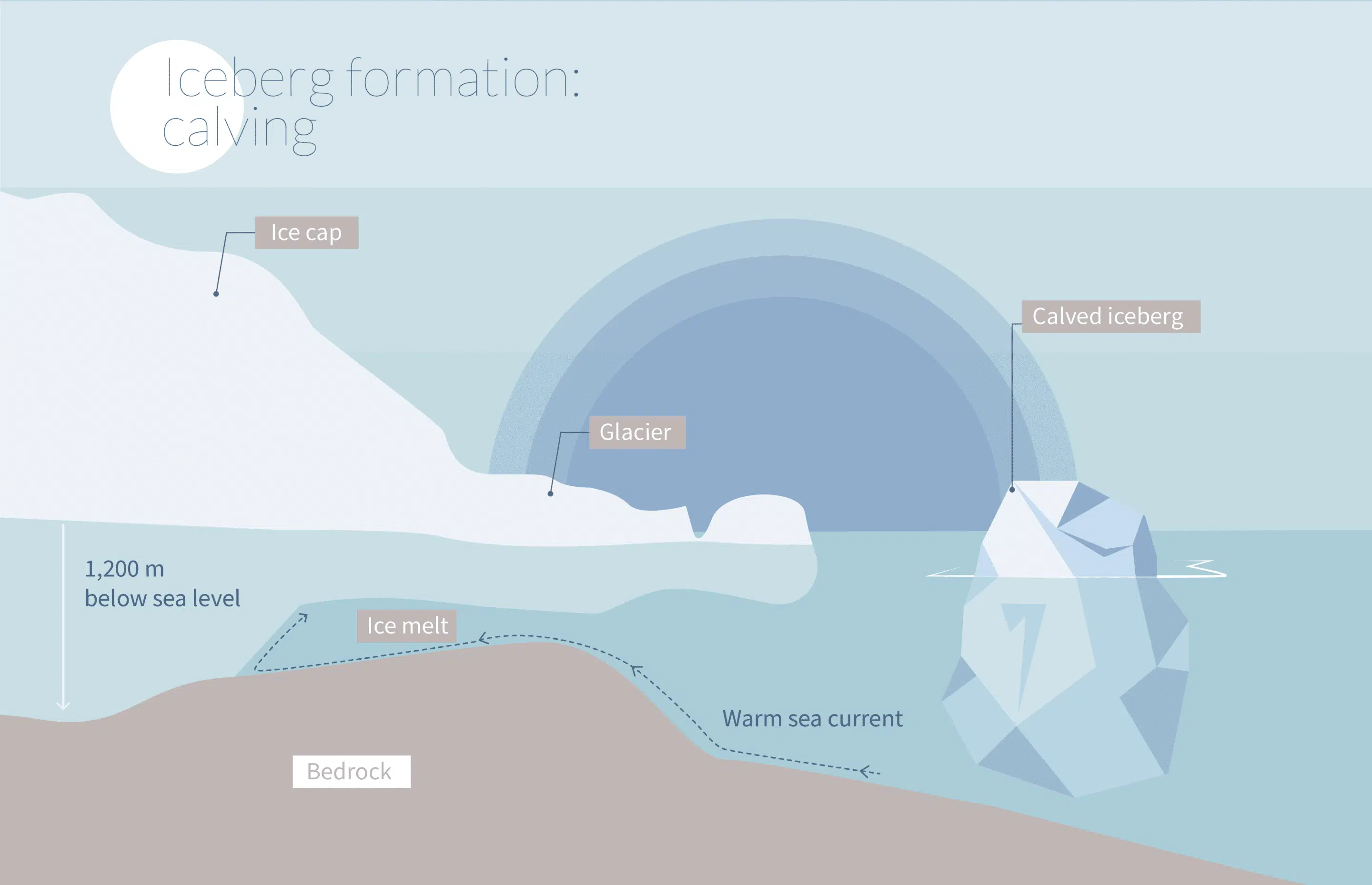Learn all about the different types of ice
Glaciers, icebergs, sea ice: all ice formations are majestic yet different. Some are made of freshwater, i.e. snow turned into ice, and others of frozen seawater. Here are some key points to help you differentiate between them.
FRESHWATER ICE:
when snow turns into land ice
Freshwater ice forms when falling snow accumulates on the bedrock and eventually becomes so heavy it is compressed into ice. This area is known as the accumulation zone. As such, land ice, also called continental ice, is composed of freshwater. On land, it forms glaciers, which are classified by size (for example, ice sheet or ice cap).
In Antarctica, glaciers can sometimes expand into vast platforms of ice, part of which rests on the bedrock while the other part floats in the sea. The floating part is called an ice shelf. They can cover several thousand square kilometres and reach heights of several dozen metres. Ice shelves end in a vertical cliff several dozen metres high (the Ross Ice Shelf and the Larsen Ice Shelf in the Weddell Sea are two examples).
Tabular icebergs, characteristic of Antarctica, are the result of ice breaking off from a platform of ice to float freely on the ocean. These impressive masses of floating ice have flat tops and are sometimes several hundred kilometres long.
DIFFERENT TYPES OF ICEBERGS
Icebergs form the edge of glaciers. They are blocks of ice that break away from glaciers and drift out to sea. The phenomenon of an ice chunk breaking away from a glacier to form an iceberg is called calving.
Icebergs can also be classified by size from the ‘very large’ to the smallest ‘growlers’ (which have an above-water height of less than 1 metre and a length of less than 5 metres).
The visible ‘tip of the iceberg’ typically only represents 20% of the total surface area of the ice block. Icebergs drifting in the ocean can take years to disintegrate before disappearing completely.
SEA ICE:
when saltwater freezes
THE STAGES OF SEA ICE FORMATION
There are several stages involved in sea ice formation.
- Frazil formation: when the temperature of the seawater decreases for an extended period of time, small saltwater crystals form and bond together.
- Pancake ice formation: the crystals accumulate into small, circular floating discs of different sizes (small, medium or large pancakes).
- Floe formation: the pancakes consolidate into sheet ice, which then cements together to form sea ice.
Although freshwater freezes at 0°C, the freezing point of seawater is below 0°C and varies according to its salinity: the saltier the water, the lower the freezing point. Freshwater ice therefore forms more easily than sea ice. Finally, seawater loses a lot of salt when it freezes, meaning that sea ice has low salinity

FIRST-YEAR AND MULTIYEAR SEA ICE
First-year sea ice forms in winter, when temperatures are at their lowest. When the temperatures rise, the seasonal sea ice melts. This is known as the breakup. As such, we generally encounter first-year sea ice, which is about 1 to 2 metres thick. There is also a type of multiyear sea ice, which does not melt every year and can be several meters thick.
Sea ice is vital for several reasons: it is an essential habitat for many species, protects coasts from erosion by acting as a barrier against storms and waves, and sustains the Inuit populations of the Arctic who depend on it for hunting, livestock farming and fishing.
Finally, there is a distinction between fast ice and drift ice or pack ice. Fast ice is fixed and remains where it forms, often along coastlines. Drift ice, meanwhile, is carried along by winds and sea currents
Ice-free areas called polynyas can form within sea ice near coastlines. They are related to sea currents, which cause warmer water to rise to the surface or to a sea ice fragmentation zone (due to persistent winds, for example).
Ice-free areas called polynyas can form within sea ice near coastlines. They are related to sea currents, which cause warmer water to rise to the surface or to a sea ice fragmentation zone (due to persistent winds, for example).

Sail into the heart of the ice
Explore the Poles aboard Le Commandant Charcot






